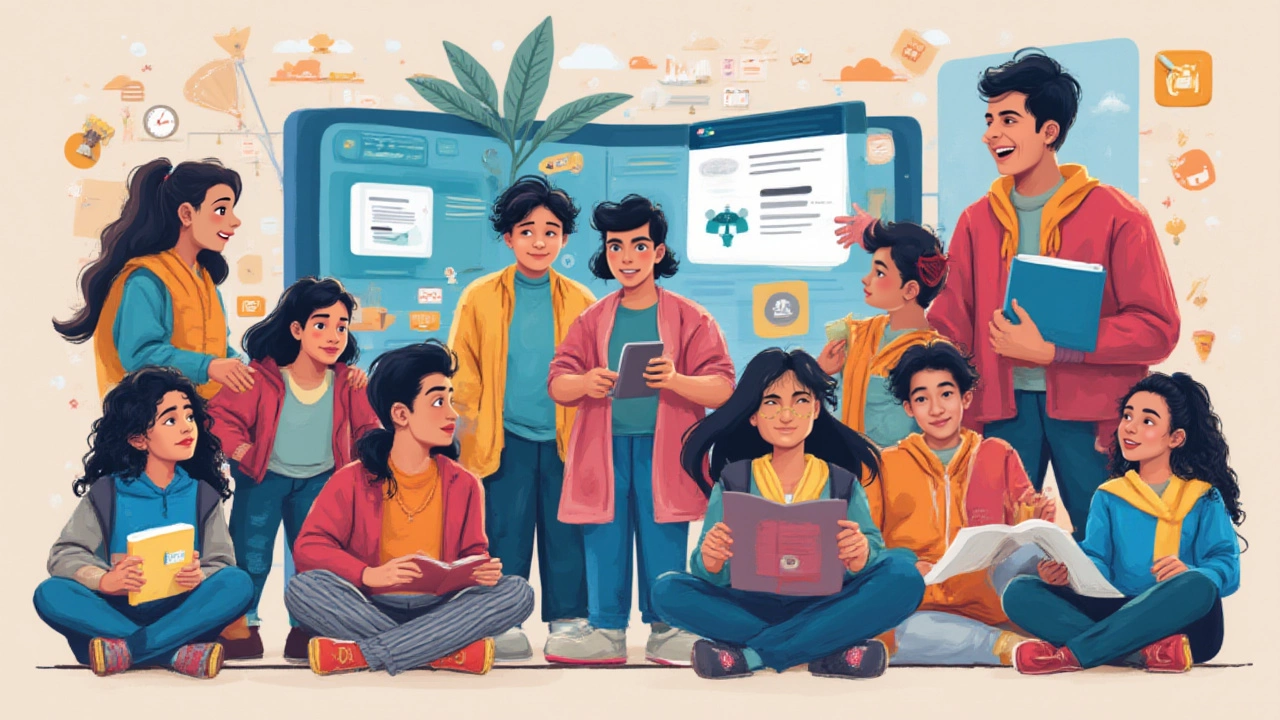Imagine signing up for an online course, excited by the big word “FREE” splashed across your screen. You’re already dreaming of that new skill or shiny certificate. But then, small obstacles start to pop up. Maybe you have to pay for the certificate. Maybe the best lessons or quizzes are locked unless you upgrade. Maybe “free” only covers the trial and after a week, that monthly fee sneaks in. If you’ve ever wondered whether free online courses are truly free, you’re definitely not alone. It’s time to pull back the curtain and look at what you’re actually getting—and what might be quietly slipping out of your wallet or your time bank.
What Does 'Free' Really Mean in Online Learning?
Let’s get real: when you see “free online courses” on a glowing banner, it almost never means what you think. Sure, some platforms like MIT OpenCourseWare and Khan Academy really do deliver full courses at zero cost, no catch. You can watch, read, download, and learn all you want, and the only thing you’ll “pay” is your attention. But those are the unicorns. More often, free means you get a taste—just enough to hook you, but not the whole meal. Some platforms, like Coursera and edX, offer course content at no cost but tack on a fee if you want a completion certificate, graded assignments, or feedback from a real instructor. FreeCodeCamp, on the other hand, tries to keep everything 100% free—and actually relies on donations to fund its mission. So, while “access” is usually free, actual credentials or perks might not be.
It can get trickier. Some programs let you enroll and watch lectures, but testing your knowledge or even downloading resources sits behind a paywall. Or, they’ll market a course as free because it’s part of a limited trial—think Udemy or Skillshare, where after the trial ends, you pay a subscription. With such platforms, “free” often comes down to having a credit card, a sharp memory for cancellation dates, or a willingness to hustle for scholarships and coupons. But you’ve probably figured out by now: nothing is really free—not even your time. Spending hours on low-quality courses just because they’re “free” might end up costing you more than money. The biggest thing you need is clarity. Always read the fine print, and if you see the phrase “audit only,” know you’re not getting credit or a real badge without payment.
The Hidden Costs Lurking in "Free" Courses
Let’s talk about those sneaky costs that aren’t listed in big bold letters. The one that gets most people is the certificate fee. For example, on Coursera as of early 2025, enrolling in a course is free, but official certification usually runs between $15 and $100 per course. Multiply that out if you’re building a portfolio. edX pulls a similar move: audit for free, but verified certificates are extra, often $50–$300 each, especially for big-name university partnerships. By the time you stack up several certificates, it can look a lot like a semester’s tuition at a decent community college.
Here’s a handy breakdown of typical costs (as of 2025):
| Platform | Free Content | Certification Fee | Other Potential Costs |
|---|---|---|---|
| Khan Academy | All content free | No certificate | None |
| Coursera | Lectures, readings | $15–$100/course | Peer-graded assignments behind paywall |
| edX | Audit content | $50–$300/course | Graded exams, projects require payment |
| Udemy | Rare free courses | Most courses $10–$200 one-time | Promotions/coupons available |
| Codecademy | Basic modules free | $15–$40/month | Pro features: projects, quizzes, certificates |
| FutureLearn | Course free for duration | $50–$300 | Upgrades for unlimited access |
| Alison | All courses free | $20–$100 | Ads, premium for ad-free |
Beyond certificates, there are hidden costs in your time and expectations. If you want feedback, mentorship, job-hunting help, or special projects—expect a tiered price list. Don’t forget about “free” resources that nudge you to buy worksheets, books, or “learning packs.” And yes, sometimes you’ll face pop-ups for “upgrading to ad-free,” or for microtransactions (especially common in language and coding apps). One extra: if your internet is spotty or slow, data charges can eat into your budget, since many free platforms assume streaming content is easy for everyone. In India, for instance, over 400 million people access YouTube lessons—but not everyone can afford unlimited data.

Who Really Pays? The Business Model Behind Free Online Courses
If the course is “free,” how does the platform pay its staff, servers, tech team, and teachers? Someone’s footing the bill. For some courses, it’s you—just not in the obvious way. For others, the cost is covered by advertisers, donors, governments, or creative cross-subsidizing. Here are some of the most common business models hiding behind those cheerful “free” banners:
- Freemium: You get basic access, but must pay for premium features like certificates, mentorship, quizzes, or ad-free learning. Most well-known: Coursera, edX, Codecademy.
- Advertising-Based: Platforms like Alison and Khan Academy display ads to keep content free. You pay in attention, not cash (unless you subscribe for ad-free).
- Subscription Trials: Platforms hook you with free trials—Udemy and Skillshare are famous for this—then convert you to paid after the trial. If you’re organized, you can stack free trials, but most people eventually pay.
- Philanthropic/Donation Model: FreeCodeCamp, Khan Academy, and MIT OpenCourseWare rely on individuals, companies, or government funds to keep courses open to all.
- Cross-selling: Free courses are the funnel. Once you’re hooked, the platform promotes paid degrees, nano-courses, or additional services like tutoring, coaching, or recruitment.
The catch? These models only work if some users do end up paying—either directly, with their money, or indirectly, with their data, eyeballs, or by upselling family and friends. For example, in 2024, less than 10% of Coursera’s 100 million registrants ever bought a certificate—but those buyers funded free access for everyone else. MIT OpenCourseWare stays up thanks to big donors and alumni. Platforms can cut corners, too: free courses might not get frequent updates, slick design, or human support, since upgrades go to paying users.
Are Free Courses Worth Your Time?
This is the million-dollar question: if you’re hunting for new skills, is a free online course enough to land you a job or get you promoted? Let’s get realistic. Free content can be fantastic when you want exposure to new fields, need a low-stakes preview, or just love to learn. For example, millions dive into Python basics on Codecademy or take Yale’s Happiness course on Coursera without ever paying. You’ll get world-class instructors and broad curriculums. But if you need proof—something you can show to employers—most times you’ll have to pony up for that certificate or badge. Hiring managers in 2025 care more about what you can do (portfolio or projects) than a stack of free completion certificates, but brand names can help you stand out in a flooded job market.
Still, there’s real value. The ability to sample top-level MIT or Stanford curriculum for zero rupees? That’s revolutionary compared to a decade ago. Plus, many people use free courses as a stepping stone into more serious, paid study once they find their groove. It’s also super handy if your goal is personal growth or prepping for something bigger (like an MBA or a coding bootcamp). But free learning comes with a “seat at the back”: you rarely get personalized feedback or networking. If you’re serious about mastering a subject or changing careers, hybrid approaches (start free, then invest in coaching, tutoring, or a capstone project) work best.
The trick is knowing your goal at the start and picking platforms that offer clear, honest value for your needs. Watch out for red flags: super-short course durations, outdated content, little to no interactivity, or “instructorless” video dumps. Check reviews, look for community forums, and—yes—make sure the platform has an actual name behind it. If you see only generic or AI-sounding instructors, it’s usually a step above a random YouTube playlist.

Tips for Getting the Most Out of Free Online Courses
So, if you’re ready to dive into the world of free online courses—and do it smart—here’s how you get the most bang for no buck. First, set your expectations. Want broad knowledge and self-paced study? Free will probably serve you well. Need a certificate or direct, expert feedback? Budget for those extras, or search for scholarships that platforms sometimes sneak in (Coursera and edX both offer financial aid).
- Always check for full syllabuses and sample modules before enrolling. The best platforms let you browse the “guts” of the course up front.
- Read the platform’s payment and certificate policy carefully. If possible, take advantage of limited-time free certificates or challenges (edX and Coursera sometimes run these for select partners).
- If you’re learning technical skills, look for communities attached to the platform—think forums, Discord groups, or open-source project spaces. These are usually more valuable than lectures alone.
- Consider mixing sources. Need to learn JavaScript? Try FreeCodeCamp modules for exercises plus MIT OpenCourseWare for theory. Double up your learning paths to fill in gaps.
- Use offline features when possible. Some courses allow you to download materials, which can save data (and money) in the long run.
- Track your own progress—don’t rely on the platform. Free courses rarely keep you motivated, so set up a weekly calendar, or buddy up with a friend for accountability.
- If you’re seeking recognized credentials, aim for free courses from partner universities or government platforms—they sometimes carry weight in specific countries. SWAYAM in India offers fully government-backed free courses used by universities for credit.
And don’t forget, sometimes the best “free” thing a course can offer is a spark: inspiration, curiosity, or a jumpstart into a new direction. Get strategic about what you want—job skills, a career shift, intellectual fun—and use “free” as your launchpad, not your full journey.
Free online courses can open doors that might once have been welded shut for anyone without deep pockets. But before you settle back in your chair, ready to soak it all in, ask yourself what “free” really means for your time, your goals, and your ambitions. And if you do run into a hidden fee or sneaky paywall, at least now you’ll know you’re not the only one.





